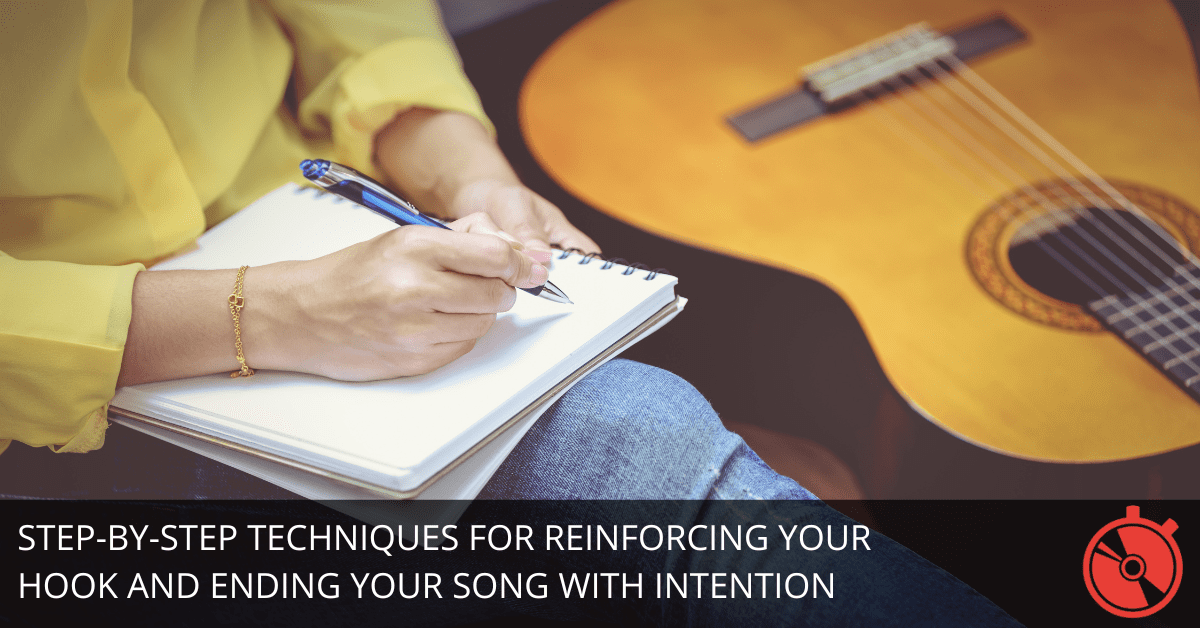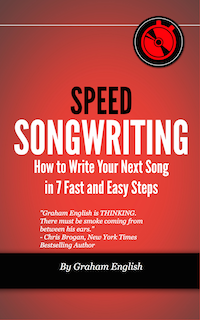
The chorus isn’t always the end of the story.
Sometimes, you need to drive the hook a little deeper. Other times, you need to wind things down without crashing the plane. That’s where post-choruses and outros come in.
Post-choruses reinforce the catchiest moments of the song. Outros let you decide how the listener leaves your world: riding high, floating gently down, or somewhere in between.
Let’s break it down step-by-step so you can design both with intention and ensure your songs end with a bang, not a shrug.
Lock In the Hook with a Post-Chorus
The post-chorus is your song’s echo. A good one keeps bouncing around in your listener’s brain long after the song ends.
Step 1: Choose Your Post-Chorus Type
You’ve got a few options here, and each one serves a different purpose:
- Vocal Break – Stripped-back vocals repeat a simple lyric or phrase. Think “oh-oh-oh”s or “na-na-na”s—wordless, emotional, and catchy.
- Instrumental Break – A riff, synth lead, or beat takes center stage. These work great when you want a moment to groove.
- Turnaround – A short, transitional moment between chorus and verse. Usually two to four bars, just enough to reset the stage.
- Bridge-as-Post – Less common, but some songs use a lyrical or structural departure as a post-chorus to throw in a final punch.
What matters is function. Ask yourself: Is this section deepening the emotional hit? Is it giving the listener more of what they already love?
Step 2: Recycle a Hook (But Make It Count)
Don’t overthink it. The post-chorus is usually not the time for new material. It’s time to reinforce the chorus hook, either exactly or with a slight twist.
For example, if your chorus ends with:
“You’re the light I never saw coming”
Your post-chorus might drop the beat out and echo:
“Never saw… never saw…”
Or layer a synth hook that mimics the melody. Or isolate the vocal and add harmonies.
You’re not trying to surprise the listener here. You’re trying to stick the landing.
Want a quick template?
- Take the chorus.
- Strip it down to its most addictive phrase.
- Repeat it with a new texture (new harmony, vocal effect, added percussion, etc.).
- End it before it overstays its welcome.
4 to 8 bars is usually the sweet spot.
Design an Outro That Actually Ends the Song
Most amateurs either forget to write an outro or throw in something forgettable. Don’t do that.
The outro is the final image in your listener’s mind. Treat it like the end of a film: how do you want them to feel when the screen fades to black?
Step 3: Decide—Wind Down or Ride Out?
There are only two choices here. Pick one.
- Wind Down if you want to bring your listener gently back to Earth. Strip away instruments. Fade out vocals. Let the energy drop like a slow exhale.
- Ride Out if you want to leave them hyped. Loop the chorus. Keep the groove steady. Maybe even add new elements in the last 4 bars for a final push.
Ask yourself: Does this song end with closure or momentum?
For example:
- In Billie Eilish’s “When the Party’s Over”, the outro lets you dissolve in emotional reverb. Wind down.
- In Dua Lipa’s “Don’t Start Now”, the outro keeps the bassline thumping until the last second. Ride out.
Step 4: Add Just Enough Change to Keep It Fresh
Whether you’re winding down or riding out, don’t just copy/paste the chorus. Make it feel intentional.
Here’s how:
- Drop out the kick drum for the last bar.
- Filter the synths to make them feel like they’re disappearing.
- Double the final lyric with an octave vocal.
- Use a single reversed piano note to mark the end.
- Add a new vocal ad-lib to leave a personal stamp.
The goal is to suggest finality, not bludgeon people with it.
A Final Tip Before You Call It Done
Listen to just the last 15 seconds of your favorite songs.
Ask yourself:
- What’s still playing?
- What’s been removed?
- What’s changed from the chorus?
- How does it make you feel?
Steal those tricks. Make them your own.
Your post-chorus and outro aren’t just filler—they’re emotional punctuation. Done right, they’ll make your hook unforgettable and your final impression unshakable.
So don't fade out quietly. End your song like you mean it.

Enter your first name and email address below and click “GET ACCESS NOW!” to get the Speed Songwriting Cheat Sheet delivered to your inbox!
We guarantee 100% privacy. Your information will not be shared.

Leave a Reply